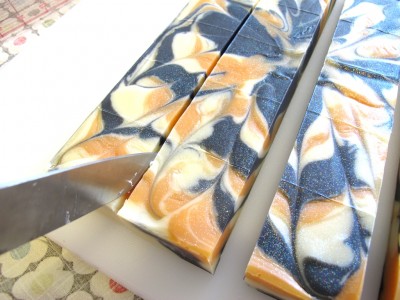LittleBunny
Member
I made this beautiful loaf of fruit loops confetti soap, didn't over insulate like I did with the previous one and just placed it in a box and left it for 24 hours. It didn't get anywhere near as hot as the first soap I made.... This is only the 2nd time I've ever made CP soap.
I prepped my area perfectly, had all my ingredients ready and everything went much more smoothly this time around - my batters were the perfect consistency and poured beautifully.
But, when it came time to cutting... I found this ugly mess about 2 inches into my bars. WHY!!!
My confetti was MP and not CP; is that the problem? If that's it, lesson learned...
Advice?
Feeling discouraged this is an expensive "trial and error" experience... kind of feel like giving up.
I prepped my area perfectly, had all my ingredients ready and everything went much more smoothly this time around - my batters were the perfect consistency and poured beautifully.
But, when it came time to cutting... I found this ugly mess about 2 inches into my bars. WHY!!!
My confetti was MP and not CP; is that the problem? If that's it, lesson learned...
Advice?
Feeling discouraged this is an expensive "trial and error" experience... kind of feel like giving up.








